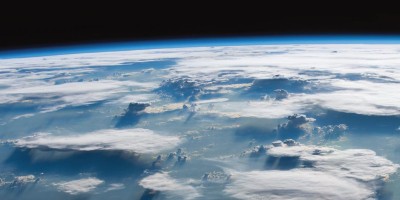Human exploration of the Solar System began on the Moon during the space race of the mid-twentieth century. To facilitate documentation and study of the human influence on the Moon, we argue it is time to designate a ‘Lunar Anthropocene’.


References
Ilardo, M. & Nielsen, R. Curr. Opin. Genet. Dev. 53, 77–82 (2018).
Hublin, J.-J. et al. Nature 546, 289–292 (2017).
Waters, M. R. Science 365, eaat5447 (2019).
Wilkinson, B. H. Geology 33, 161 (2005).
Kemp, D. B., Sadler, P. M. & Vanacker, V. Nat. Commun. 11, 6012 (2020).
Crutzen, P. J. & Stoermer, E. F. Glob. Change Newsl. 41, 17–41 (2000).
Zalasiewicz, J. et al. GSA Today 18, 4–8 (2008).
Lewis, S. L. & Maslin, M. A. Nature 519, 171–180 (2015).
Waters, C. N. & Turner, S. D. Science 378, 706–708 (2022).
Witze, A. Nature https://doi.org/10.1038/d41586-022-00542-4 (2022).
Peeters, W. New Space 6, 187–190 (2018).
Crutzen, P. J. Nature 415, 23 (2002).
Glikson, A. Anthropocene 3, 89–92 (2013).
Waters, C. N., Zalasiewicz, J. A., Williams, M., Ellis, M. A. & Snelling, A. M. A Stratigraphical Basis for the Anthropocene? (Geological Society of London, 2014); https://doi.org/10.1144/SP395.18
Subramanian, M. Nature https://doi.org/10.1038/d41586-019-01641-5 (2019).
Steffen, W., Broadgate, W., Deutsch, L., Gaffney, O. & Ludwig, C. Anthr. Rev. 2, 81–98 (2015).
Schäfer, G. Anthropocene Working Group proposes Crawford Lake as GSSP candidate site of the Anthropocene series. Max Planck Institute of Geoanthropology (12 July 2023); https://go.nature.com/3R4zW7D
Witze, A. Nature 612, 397–399 (2022).
Wilhelms, D., McCauley, J. & Trask, N. The geologic history of the Moon (US Government Printing Office, 1987).
Holcomb, J. A. et al. Geoarchaeology 38, 513–533 (2023).
Prem, P., Hurley, D. M., Goldstein, D. B. & Varghese, P. L. J. Geophys. Res. Planets 125, e2020JE006464 (2020).
UCS Satellite Database (Union of Concerned Scientists, accessed 22 August 2022); https://www.ucsusa.org/resources/satellite-database
Acknowledgements
We thank H. Erftenbeck, B. O’Leary, C. Runnels, D. Stewart, H. Beran and M. Niquette for helpful discussions.
Author information
Authors and Affiliations
Corresponding author
Ethics declarations
Competing interests
The authors declare no competing interests.
Rights and permissions
About this article
Cite this article
Holcomb, J.A., Mandel, R.D. & Wegmann, K.W. The case for a lunar anthropocene. Nat. Geosci. 17, 2–4 (2024). https://doi.org/10.1038/s41561-023-01347-4
Published:
Issue Date:
DOI: https://doi.org/10.1038/s41561-023-01347-4
- Springer Nature Limited


